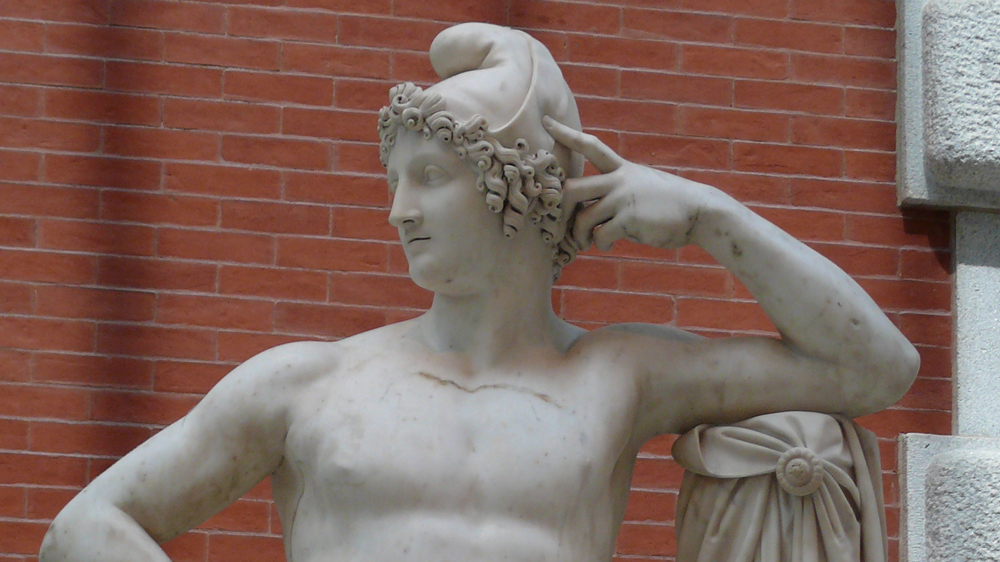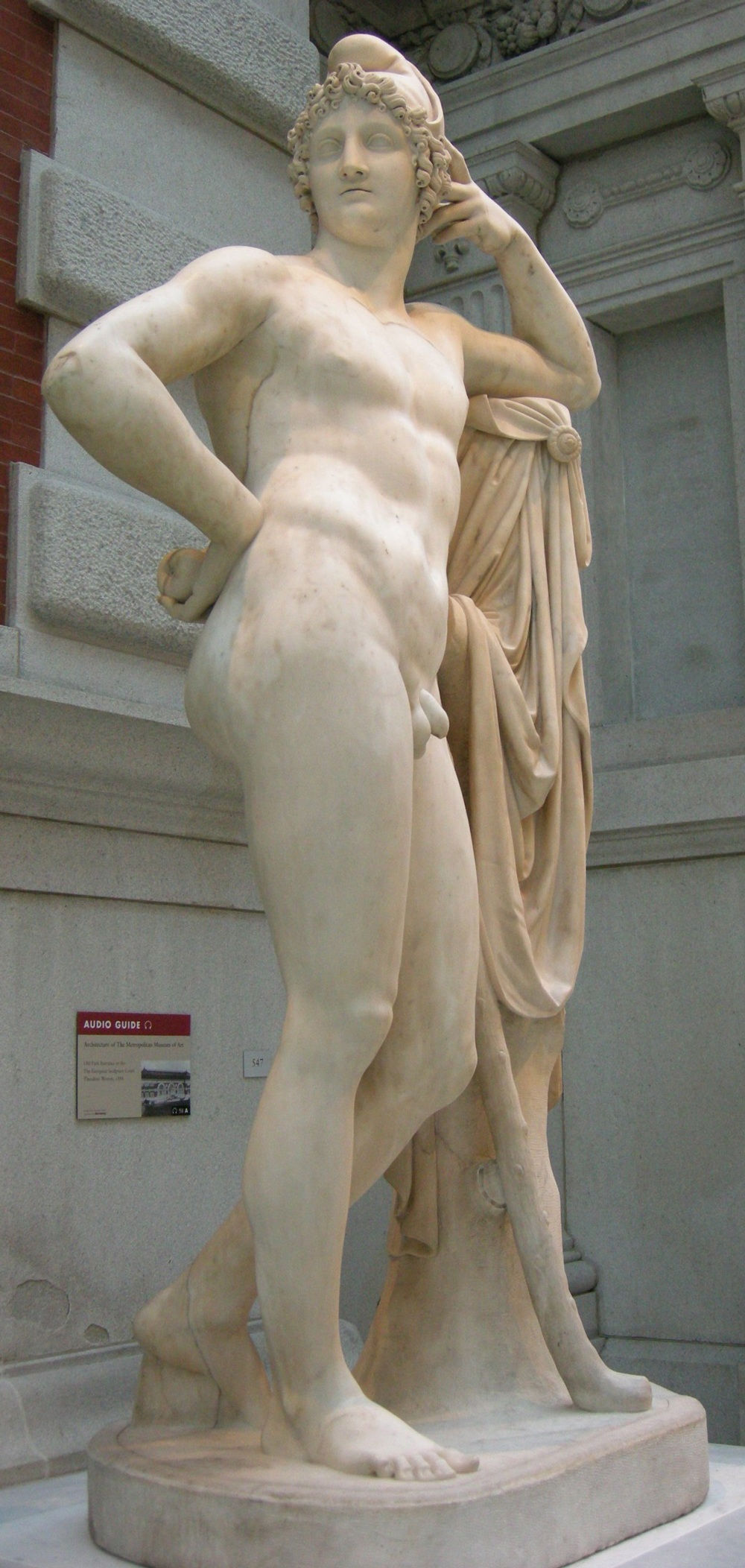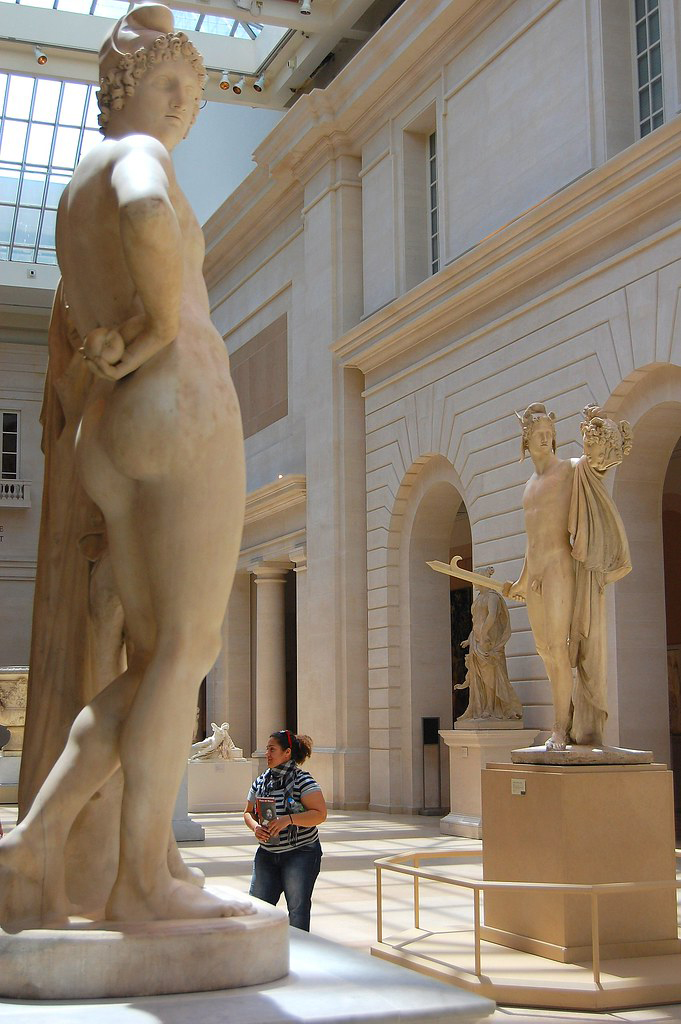Introduction
Antonio Canova’s “Paris Sculpture” is a masterpiece rich in historical depth and mythological significance. The sculpture depicts one of the most handsome mortals in Greek mythology – Paris, wearing a Phrygian military cap, standing quietly there, with a calm posture and peaceful gaze that does not reveal the disaster after that moment. This article will delve into the artistic background, symbolism, and Canova’s unique interpretation of this ancient mythological story of this sculpture.
Artist background and creative era
The Era of Canova: Antonio Canova was an outstanding representative of Italian neoclassical sculpture from the late 18th to early 19th centuries. His works demonstrated a profound understanding of ancient Greek and Roman art and held an important position on the European art stage at that time. He is praised for his unique grasp of human body structure and exquisite sculpture skills.
The Artistic Background of Paris Sculpture
The Reproduction of Greek Mythology: This sculpture depicts a famous scene in Greek mythology, where Paris presented Venus with a golden apple and accepted her bribe, leading to the catastrophic consequences of the Trojan War. Paris wore a Phrygian military cap, which was the symbol of Türkiye at that time, echoing the place where Paris lived.
Interpretation and symbolism of sculpture
Handsome Paris: Legend has it that Paris is one of the most handsome mortals, which is exquisitely portrayed in sculpture. Canova successfully showcases the handsomeness and dignity of Paris through the delicacy of sculpture.
Peaceful posture: Paris presents a peaceful posture, as he stands there, gazing ahead with a calm expression. This tranquility contrasts sharply with the upcoming wars and tragedies, causing viewers to contemplate when examining the sculpture.
The Historical Background of Sculpture
Commission for Sculpture: Canova originally carved the first version of the Paris Sculpture for Jos é phine de Beauharnais between 1808 and 1812. This version is now located at the Hermitage Museum in St. Petersburg. The other sculpture was made for Prince Ludwig of Bavaria and is currently preserved in Munich.
The Artistic Techniques and Innovation of Sculpture
The exquisite expression of human body structure: Canova is known for his profound understanding of human body structure, which is fully demonstrated in the Sculpture. He presents the realism and elegance of sculpture by accurately capturing muscles, curves, and proportions.
The influence of sculpture on later generations
The Inheritance of Art: The Paris Sculpture, as one of Canova’s representative works, has had a profound impact on later art. Its handling of human body structure and mythological themes became a classic example of neoclassical sculpture, providing inspiration for later artists.
Epilogue
The Paris Sculpture is a masterpiece that showcases the artistic style of Canova and a profound understanding of Greek mythology. Sculpture, through its exquisite artistic skills and sensitive expression of details, presents a peaceful and handsome Paris, presenting viewers with a contemplative and elegant picture. This work not only won praise at the time, but also left profound marks in later art history, becoming one of the representatives of neoclassical sculpture.






